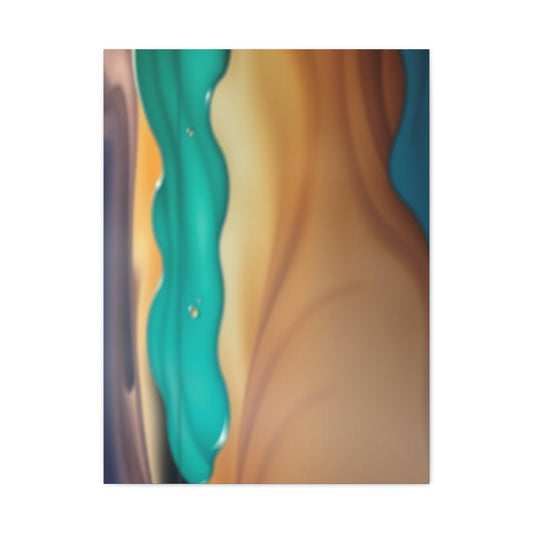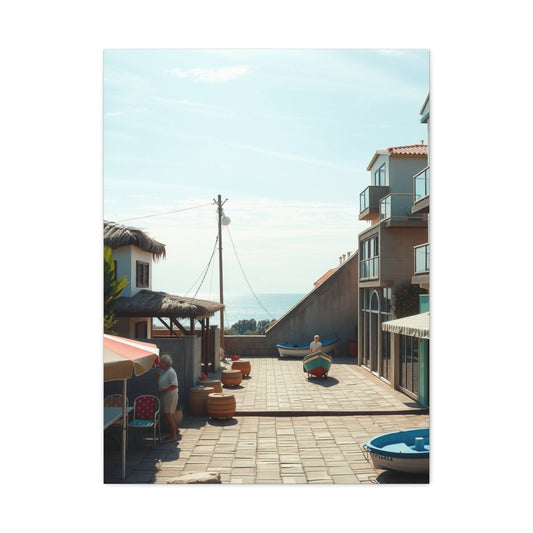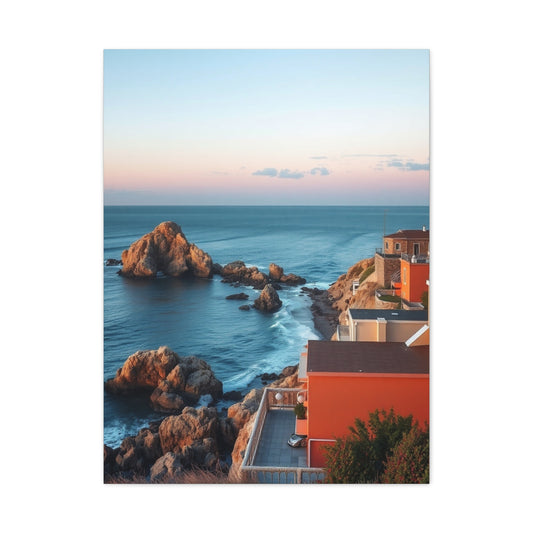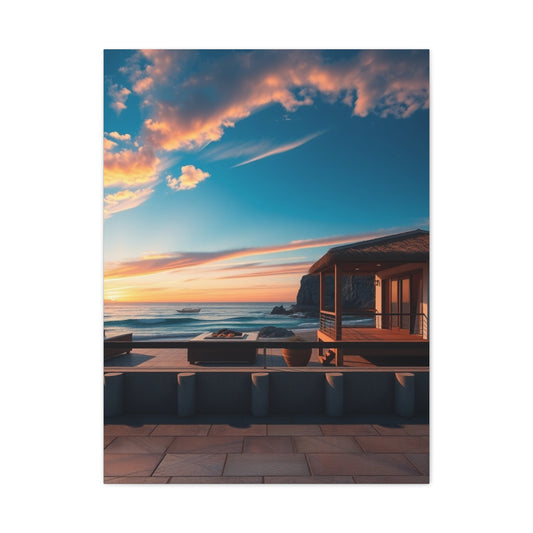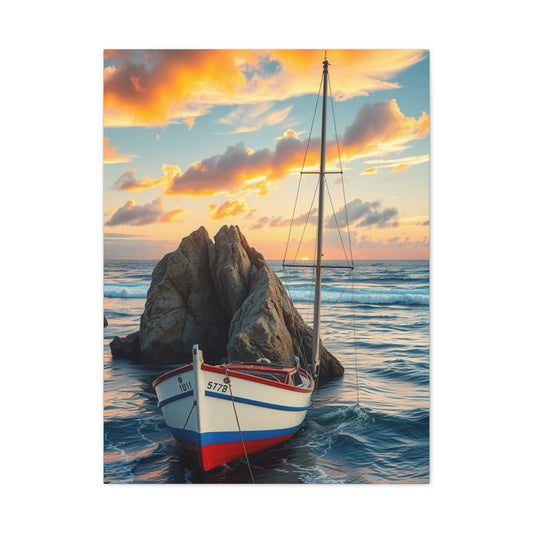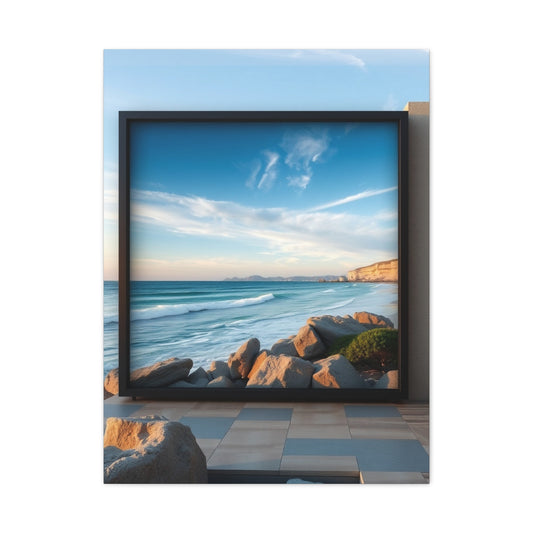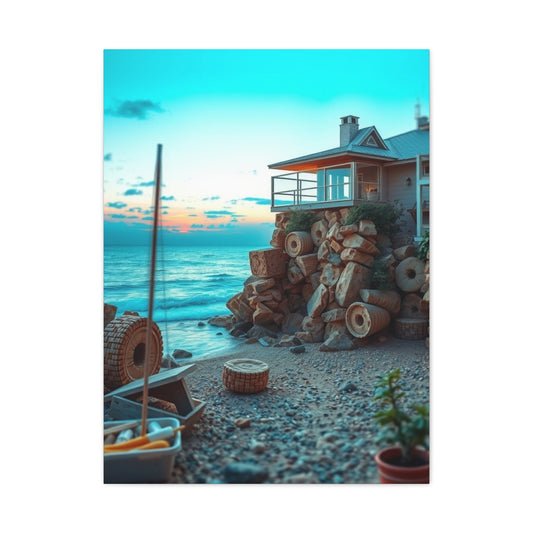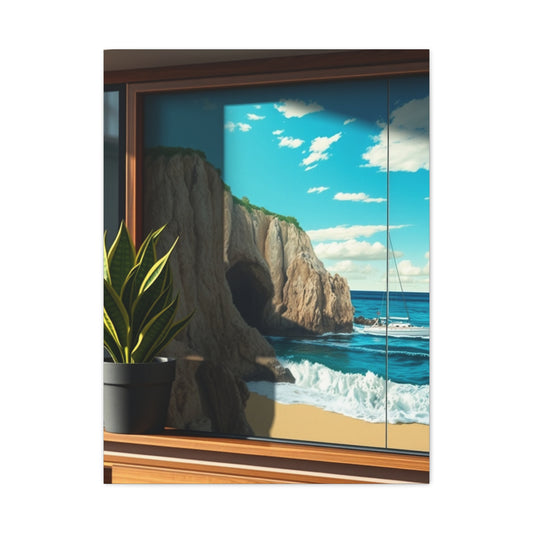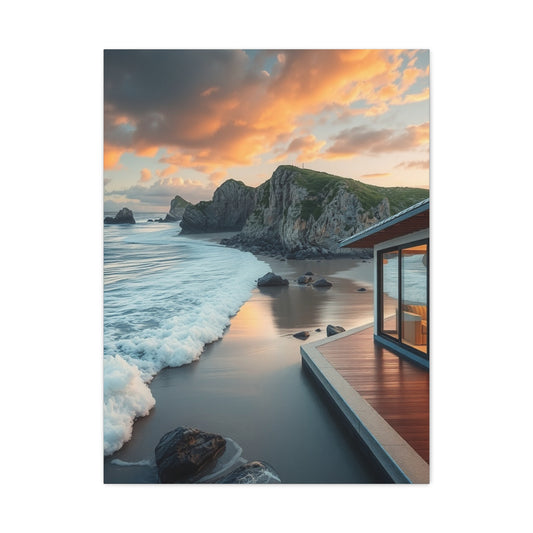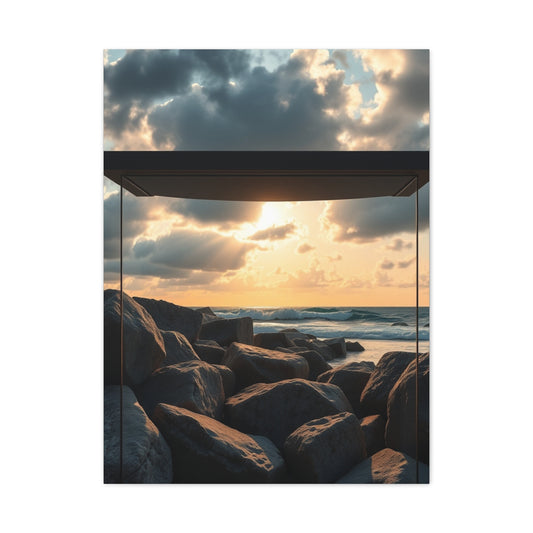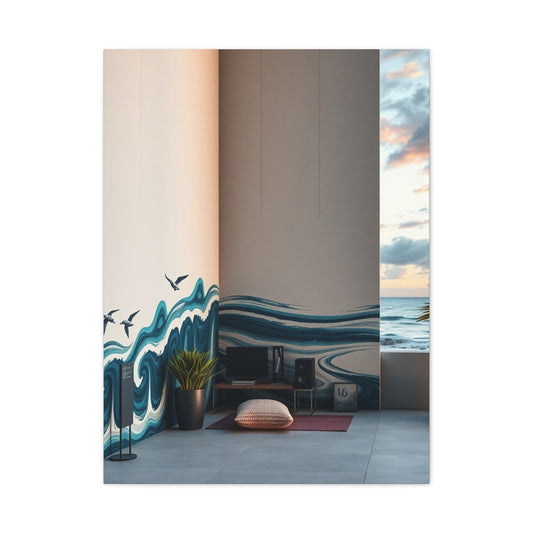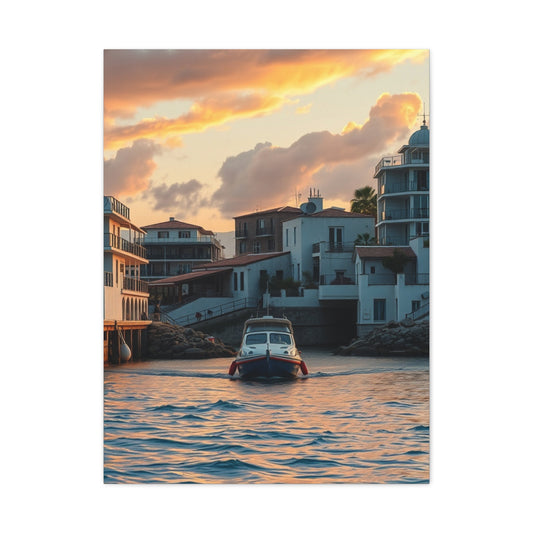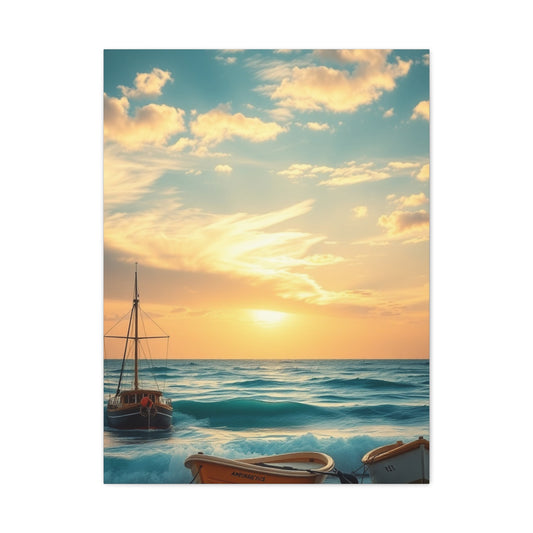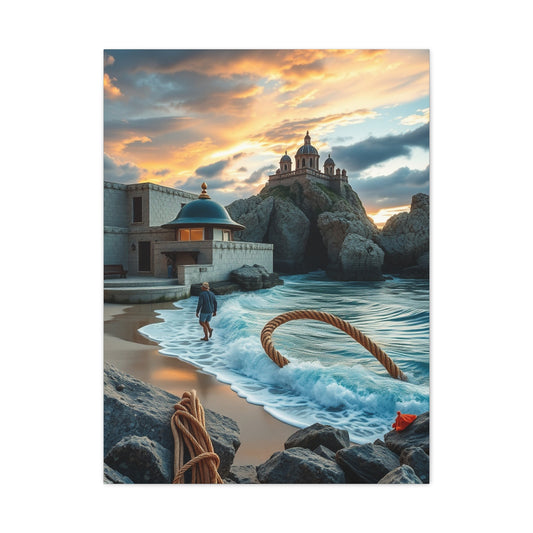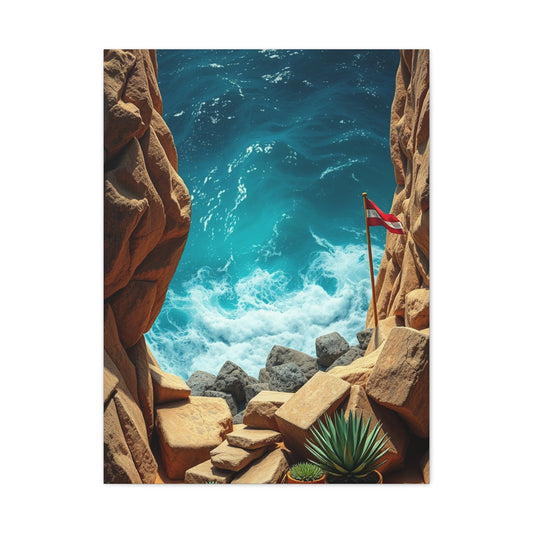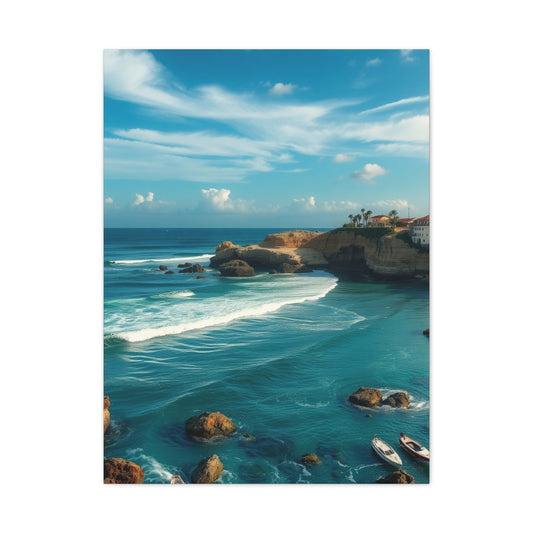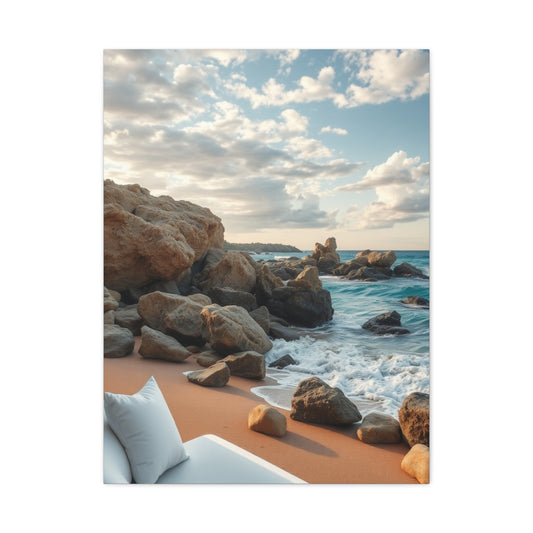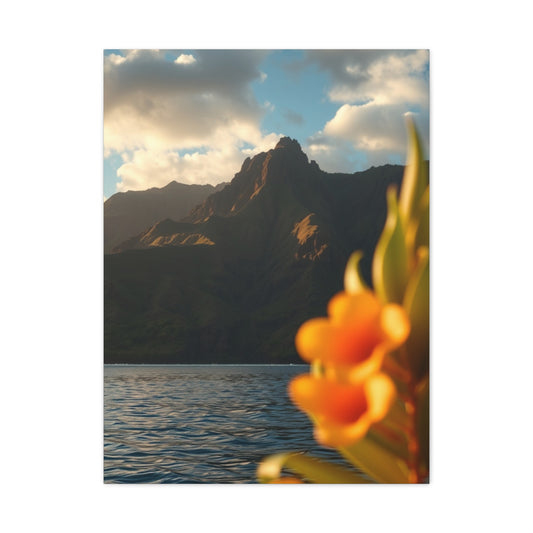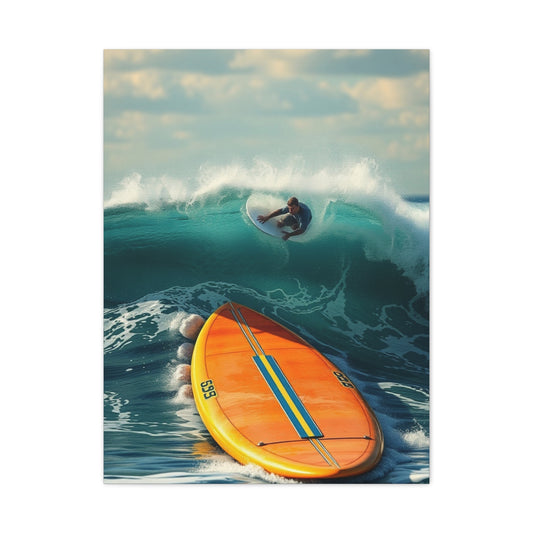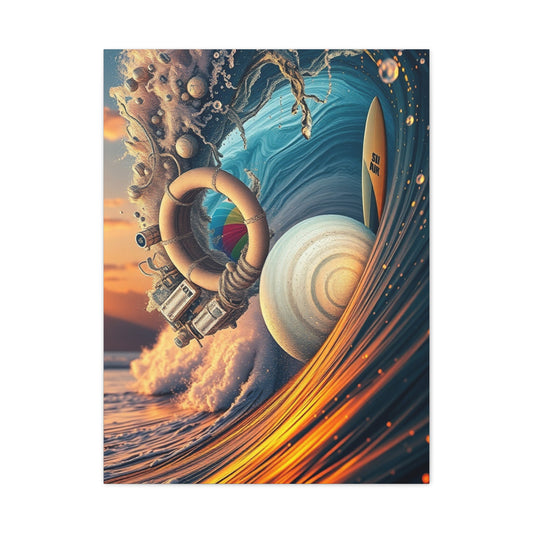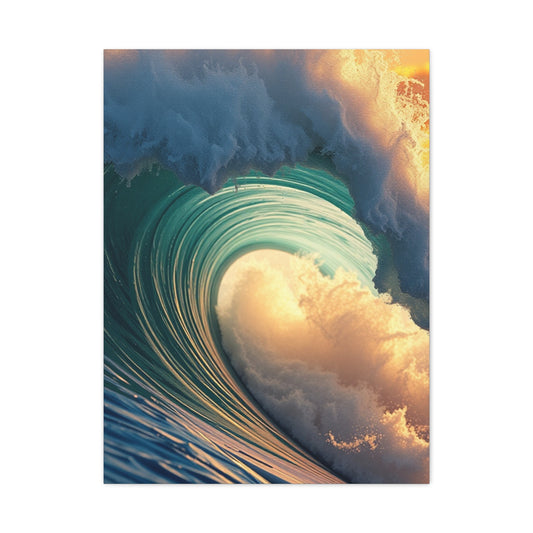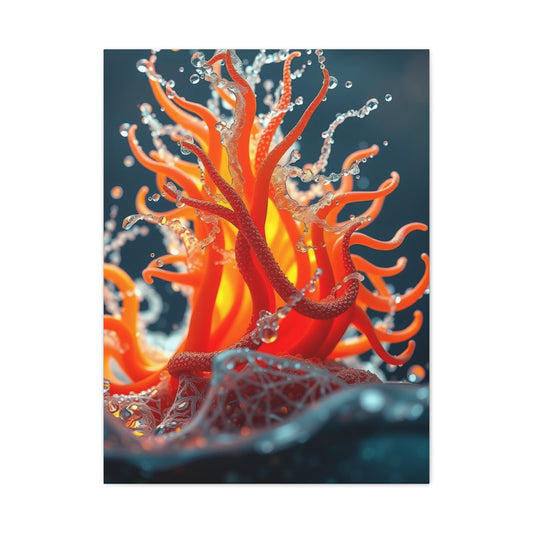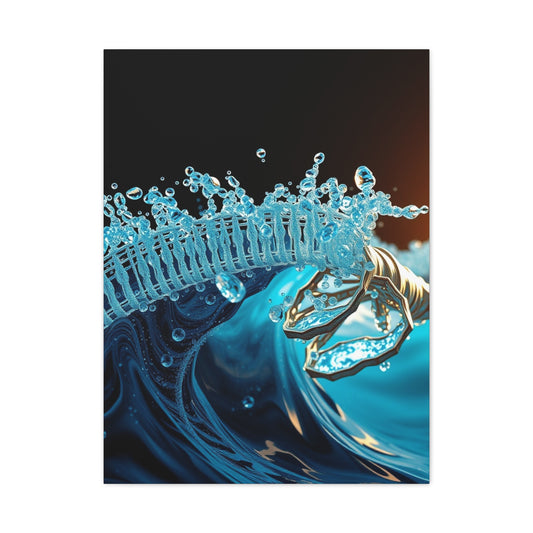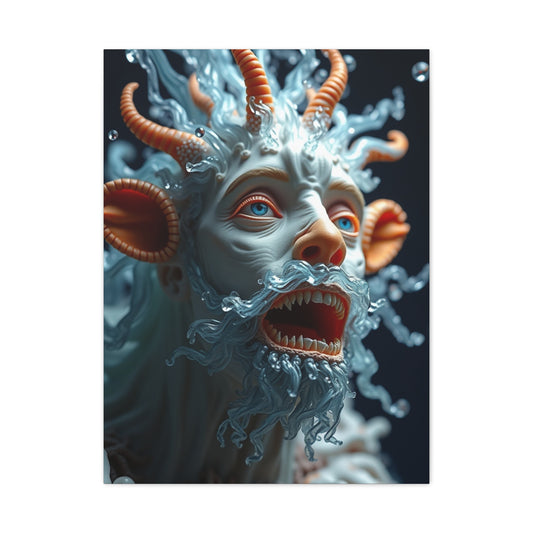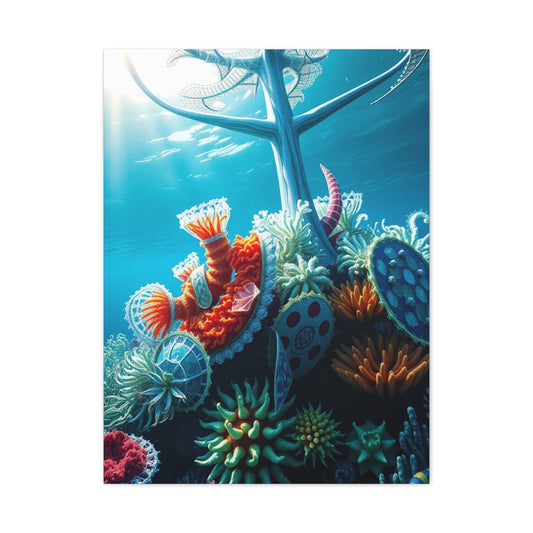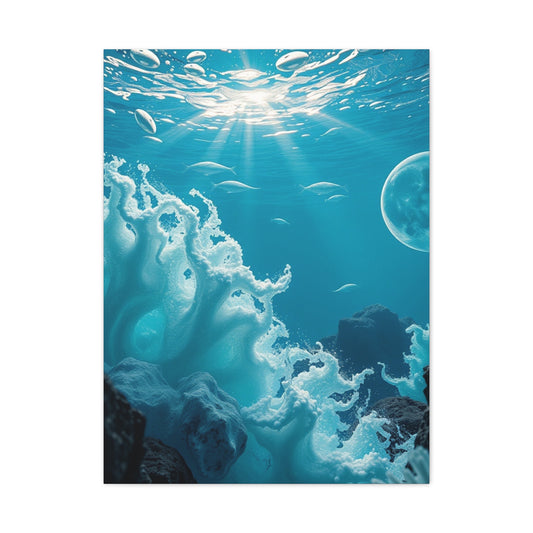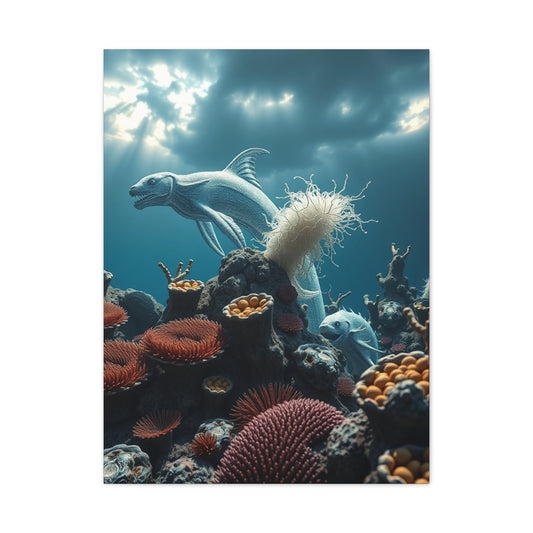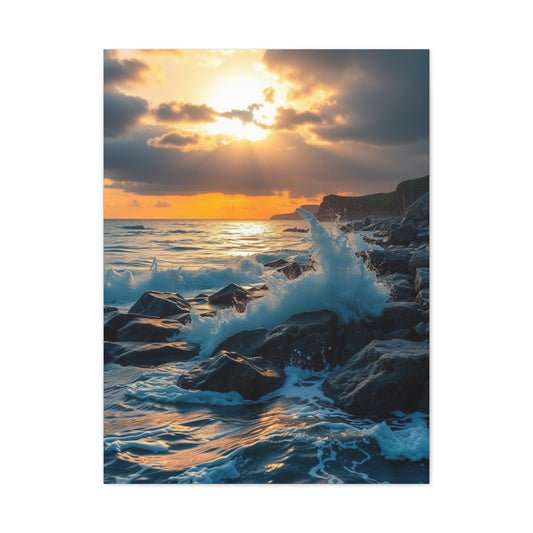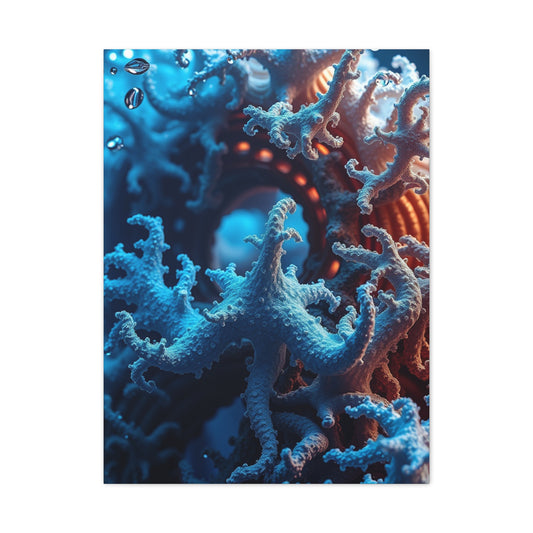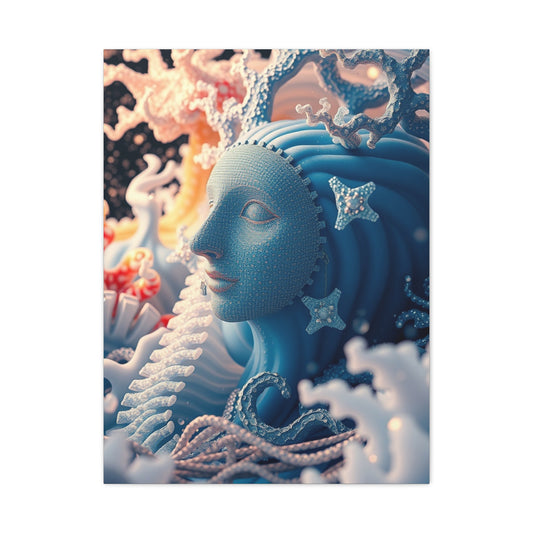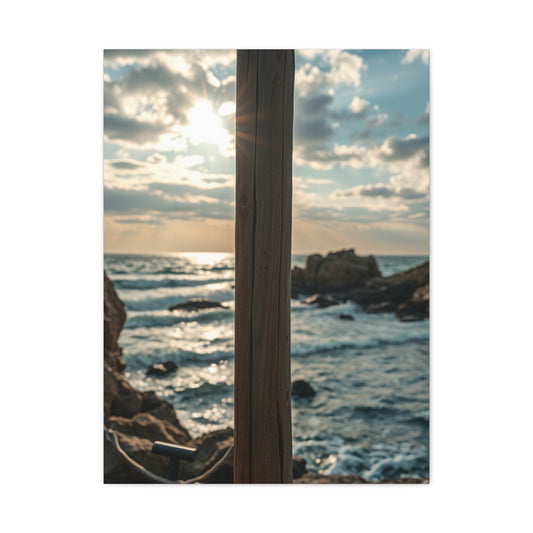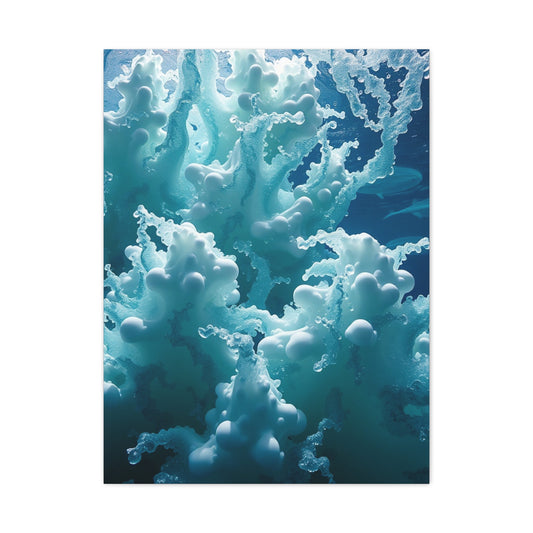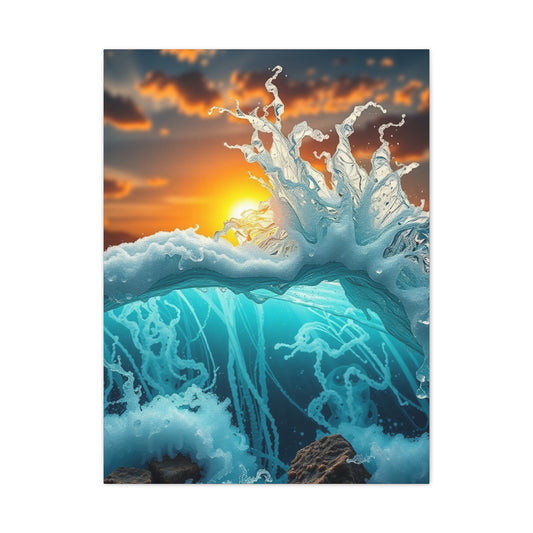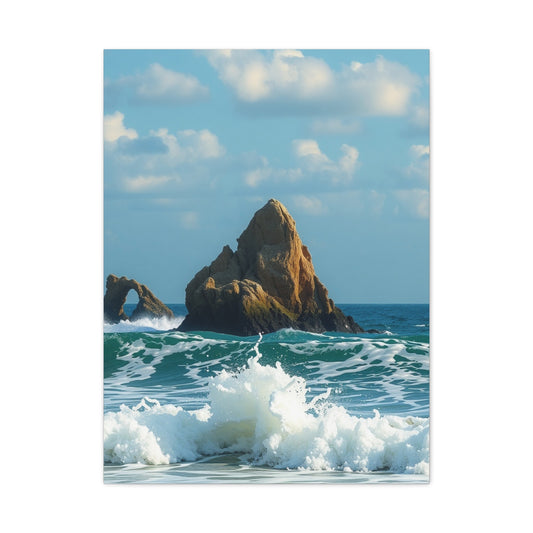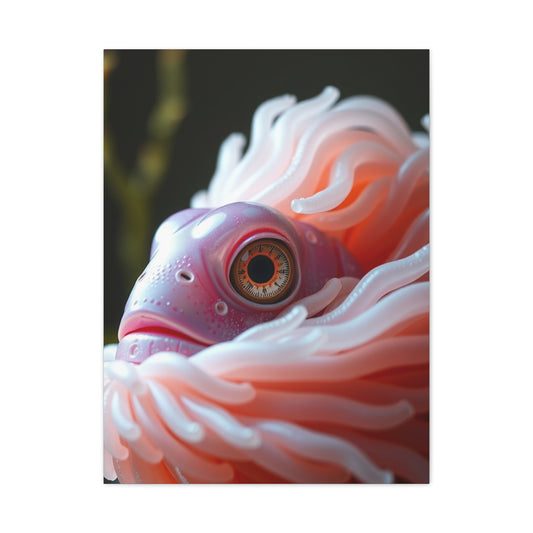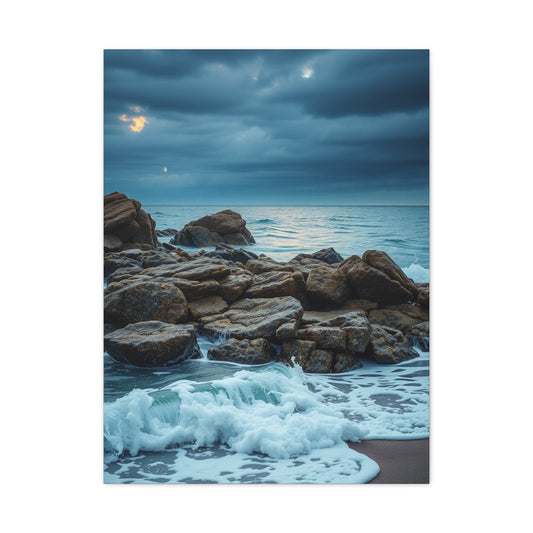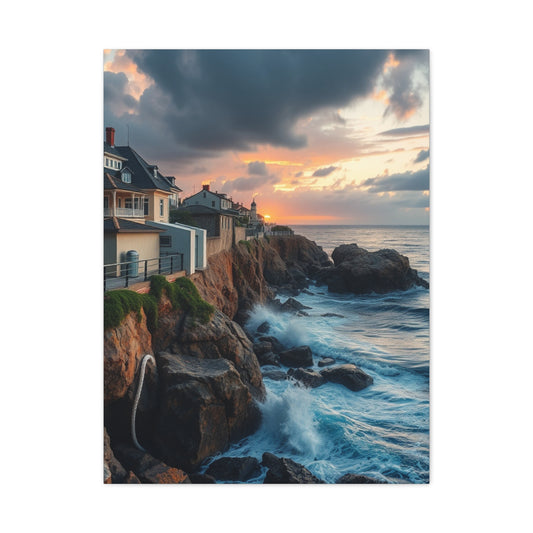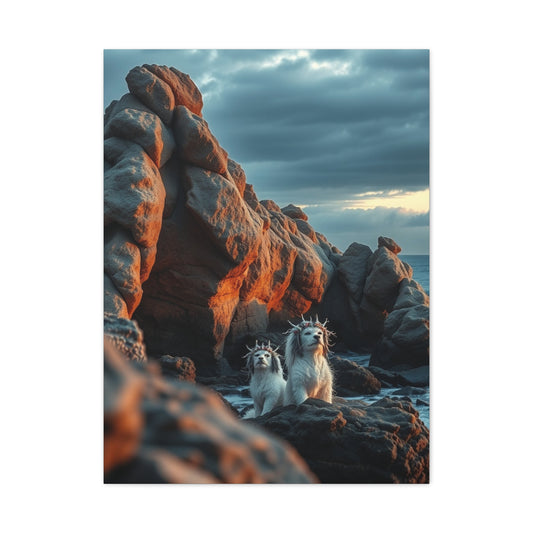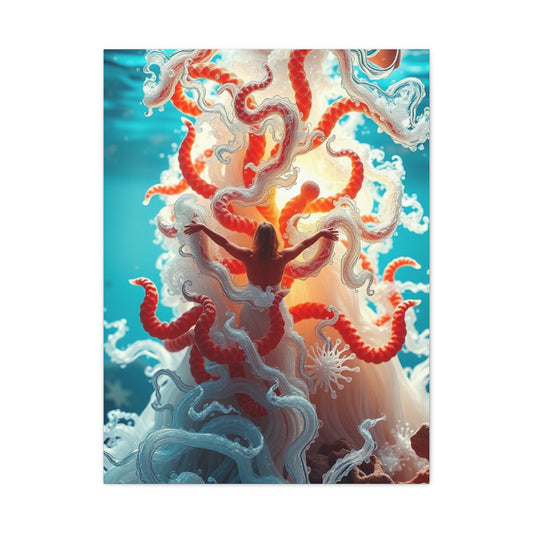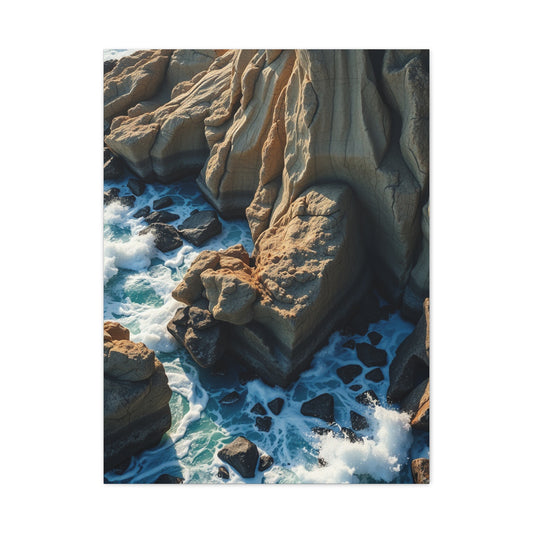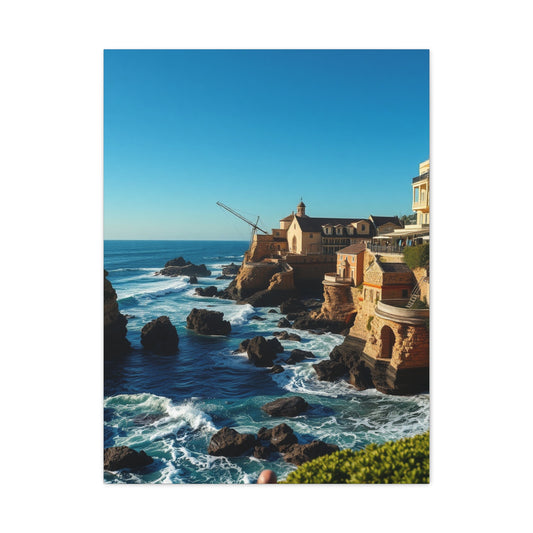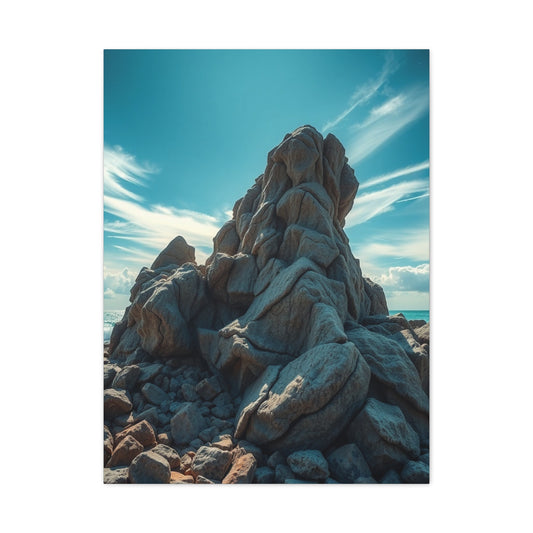Bring the Coast Home Serene Ocean-Inspired Wall Art for Your Living Room
The ocean has always held a unique power over the human spirit. For centuries, people have found solace, renewal, and inspiration along coastlines, where the meeting of sky and sea creates an infinite canvas of beauty. The steady rhythm of crashing waves, the shimmering light dancing on the water’s surface, and the expansive horizons all evoke a profound sense of peace. It is no wonder that coastal living, even when recreated indoors, continues to enchant homeowners across the world.
In our fast-paced, urban-centered lives, many seek ways to bring that same tranquility and timeless beauty into their homes. One of the most effective and versatile ways to achieve this transformation is through ocean-inspired wall art. More than just decoration, these artworks allow us to immerse ourselves in the spirit of the sea, creating a living environment that feels refreshing, calm, and deeply connected to nature.
Ocean-inspired wall décor resonates on a deeply emotional level. While some may be drawn to the raw power of turbulent waves, others may prefer the calm of a sunlit beach or the mystery of the deep blue. Each depiction carries its own narrative, reminding us of personal experiences—childhood beach vacations, seaside adventures, or even moments of quiet reflection by the shore.
Displaying maritime artwork in your living room invites these feelings into your daily environment. A large canvas of a peaceful horizon, for instance, can set a meditative tone, while vibrant tropical seascapes can energize the space with color and light. The beauty of ocean art is that it adapts to your mood and aesthetic, providing not only decoration but also emotional depth.
Why Coastal Themes Work in Living Rooms
The living room serves as the heart of a home—a space for gathering, relaxing, and entertaining. Integrating coastal-inspired wall art here creates an inviting atmosphere that appeals to both residents and guests. Unlike fleeting décor trends, oceanic imagery offers a timeless appeal. It speaks to universal human experiences of freedom, exploration, and serenity.
The psychological connection between humans and aquatic environments runs deeper than mere aesthetic appreciation. Scientific research has consistently demonstrated that exposure to water-related imagery can significantly reduce stress levels, lower cortisol production, and promote a profound sense of well-being. When we incorporate oceanic artwork into our homes, we're not merely adding decorative elements; we're creating therapeutic environments that nourish our souls and provide respite from the demanding pace of contemporary life.
Marine-themed artwork encompasses an extraordinary spectrum of artistic expressions, ranging from hyperrealistic depictions of crashing surf to abstract interpretations of tidal movements. Each piece carries within it the essence of maritime tranquility, offering viewers a momentary escape to sun-drenched beaches, crystalline waters, and endless azure skies. The versatility of this artistic genre allows homeowners to select pieces that resonate with their personal aesthetic preferences while maintaining the underlying theme of oceanic serenity.
The transformative power of seaside artwork extends beyond individual rooms, creating cohesive narratives throughout entire homes. When strategically placed, these pieces can establish visual pathways that guide inhabitants and guests through a carefully orchestrated journey of coastal discovery. The subtle interplay of colors, textures, and themes creates an immersive environment that celebrates the timeless beauty of maritime landscapes while providing a sophisticated backdrop for daily life.
Popular Styles of Ocean-Inspired Wall Art
Creating an authentic coastal atmosphere requires more than simply hanging a few ocean-themed prints on the wall. The process involves a thoughtful curation of elements that work synergistically to evoke the multisensory experience of being near the water. The foundation of this transformation begins with understanding how different types of maritime artwork can influence the mood and energy of a space.
Photorealistic seascape paintings possess an immediate and powerful impact, transporting viewers directly to specific coastal locations. These meticulously crafted works often feature dramatic wave formations, pristine beaches, or rugged cliff faces that capture the raw power and sublime beauty of natural maritime environments. The level of detail in such pieces allows observers to lose themselves in the artwork, discovering new elements with each viewing and maintaining a sense of wonder that never diminishes.
Abstract interpretations of oceanic themes offer a different but equally compelling approach to coastal decoration. These pieces distill the essence of maritime environments into pure color, form, and movement, allowing viewers to project their own memories and emotions onto the artwork. The ambiguous nature of abstract marine art makes it particularly versatile, as it can complement a wide range of interior design styles while maintaining its connection to coastal themes.
Mixed-media coastal artwork represents another fascinating category that combines traditional painting techniques with three-dimensional elements, textural components, or unconventional materials. These innovative pieces create dynamic visual experiences that change depending on lighting conditions, viewing angles, and the time of day. The multidimensional nature of such artwork adds depth and complexity to interior spaces, creating focal points that continue to reveal new aspects over time.
The scale of maritime artwork plays a crucial role in determining its effectiveness within a given space. Large-format pieces possess an undeniable presence that can anchor entire rooms, creating dramatic focal points that immediately capture attention and establish the overall aesthetic direction of the space. These substantial works are particularly effective in open-plan living areas, master bedrooms, or dining rooms where their impressive dimensions can be fully appreciated.
When considering oversized oceanic artwork, it's essential to evaluate the proportional relationship between the piece and the surrounding architectural elements. A massive wave painting in a small room might overwhelm the space, while a tiny seascape in a vast living area could appear insignificant and fail to achieve its intended impact. The key lies in finding the perfect balance that allows the artwork to command attention without dominating the entire environment.
Medium-sized coastal pieces offer exceptional versatility, serving as excellent transitional elements that can bridge different areas within a home. These works are ideal for hallways, staircases, or as part of gallery wall arrangements where multiple pieces work together to create a cohesive narrative. The moderate scale of such artwork makes it suitable for a wide range of interior configurations while still maintaining sufficient presence to influence the overall atmosphere of the space.
Smaller maritime pieces shouldn't be overlooked, as they can serve important supporting roles in comprehensive coastal design schemes. These intimate works are perfect for powder rooms, reading nooks, or as accent pieces that complement larger installations. When grouped strategically, smaller oceanic artworks can create powerful visual clusters that rival the impact of single large-format pieces while offering greater flexibility in arrangement and rearrangement.
Exploring Color Harmonies in Marine Artwork
The color palette of coastal artwork serves as a fundamental element in establishing the desired atmospheric qualities within a space. Traditional oceanic color schemes draw heavily from the natural hues found in maritime environments: the deep blues and teals of ocean depths, the foam whites of breaking waves, the warm beiges and sandy tones of beaches, and the soft grays of weathered driftwood. These colors possess an inherent calming quality that promotes relaxation and mental clarity.
However, contemporary marine artists have expanded far beyond conventional color expectations, creating works that incorporate surprising and sophisticated palettes while maintaining their connection to coastal themes. Sunset-inspired pieces might feature dramatic oranges, vibrant purples, and golden yellows that capture the spectacular light shows that occur at the boundary between sea and sky. These warmer palettes can inject energy and vitality into spaces while still honoring the maritime theme.
Monochromatic approaches to oceanic artwork offer another compelling option for homeowners seeking sophisticated coastal aesthetics. Black and white seascapes possess a timeless elegance that transcends contemporary design trends, making them excellent long-term investments for interior decoration. The absence of color allows viewers to focus entirely on composition, texture, and emotional content, often resulting in more powerful and memorable artistic experiences.
The strategic use of accent colors within predominantly blue-and-white coastal schemes can create visual interest and prevent monotony. Coral pinks, sea glass greens, or weathered silver tones can be introduced through smaller artwork pieces or decorative elements to add complexity and depth to the overall color story. The key is to maintain the oceanic theme while incorporating enough variety to keep the space visually engaging and dynamic.
Curating Gallery Walls with Nautical Themes
The arrangement of multiple maritime pieces into cohesive gallery walls requires careful consideration of scale, color harmony, subject matter, and visual flow. Successful nautical gallery walls tell comprehensive stories about coastal life, perhaps beginning with dramatic seascapes and transitioning through beach scenes, marine wildlife, and intimate details of shoreline environments. The narrative progression guides viewers through a visual journey that mirrors the experience of exploring actual coastal regions.
When planning gallery wall arrangements, it's important to maintain consistent spacing between pieces while varying the sizes and orientations of individual works. This creates visual rhythm and prevents the arrangement from appearing static or overly rigid. The inclusion of three-dimensional elements, such as small sculptural pieces or shadow boxes containing coastal artifacts, adds depth and interest to gallery wall compositions.
The frame selection for gallery wall pieces plays a crucial role in unifying diverse artworks into coherent compositions. Weathered wood frames can enhance the rustic, beachy aesthetic of casual coastal interiors, while sleek metal frames might be more appropriate for contemporary spaces with maritime themes. The consistency of framing materials helps establish visual continuity even when the individual artworks vary significantly in style or subject matter.
Lighting considerations become particularly important when dealing with gallery wall arrangements, as uneven illumination can create distracting shadows or cause certain pieces to disappear while others dominate. Track lighting or strategically placed picture lights can ensure that each artwork receives appropriate illumination while contributing to the overall ambiance of the space. The quality of lighting can dramatically affect how colors appear and how textural elements are perceived.
Seasonal Adaptations in Coastal Artwork Display
One of the advantages of maritime-themed artwork is its ability to adapt to seasonal changes while maintaining its core aesthetic appeal. During summer months, brighter, more vibrant oceanic pieces can celebrate the peak beach season and complement the increased natural light that characterizes this time of year. Beach scene paintings featuring clear skies, calm waters, and sunny conditions perfectly capture the optimistic energy of summer coastal living.
As seasons transition into autumn and winter, the artwork selection can shift to emphasize the more dramatic and moody aspects of maritime environments. Storm-tossed seascapes, gray-sky beach scenes, and artwork featuring rougher waters can reflect the changing natural cycles while maintaining the coastal theme. These pieces often possess a contemplative quality that complements the introspective nature of colder months.
The flexibility to rotate artwork seasonally prevents coastal interiors from becoming stagnant and allows homeowners to rediscover favorite pieces with fresh eyes. Storage solutions for off-season artwork should be considered during the initial planning phases, ensuring that valuable pieces remain protected when not on display. This rotational approach also allows for the gradual expansion of coastal art collections without overwhelming living spaces.
Seasonal adaptation can also involve the temporary addition of complementary decorative elements that enhance the maritime theme without permanent modification of the space. Summer might bring in bright coral accents or tropical plant elements, while winter could introduce cozy textiles in oceanic colors or weathered wood accessories that reference driftwood and pier construction.
Integrating Lighting to Enhance Maritime Ambiance
The illumination of coastal artwork requires careful consideration to maximize its atmospheric impact and preserve its longevity. Natural light represents the ideal illumination for most maritime pieces, as it mimics the bright, clear light conditions found in actual coastal environments. Rooms with large windows or skylights provide optimal conditions for displaying oceanic artwork, allowing the pieces to appear as natural extensions of the outdoor environment.
When natural light is insufficient or inconsistent, artificial lighting systems can be designed to complement and enhance maritime artwork. LED lighting systems offer excellent color rendering capabilities that accurately represent the subtle color variations found in high-quality coastal paintings. The cool color temperature of LED lights also complements the blue and white palettes commonly found in oceanic artwork.
Accent lighting can be used to create dramatic effects that emphasize the most compelling aspects of maritime pieces. Uplighting can create the impression of sunlight reflecting off water surfaces, while carefully positioned spotlights can highlight textural elements or specific areas of particular artistic interest. The goal is to enhance the natural beauty of the artwork without creating harsh shadows or overwhelming brightness that detracts from the viewing experience.
Dimming capabilities allow for the creation of different moods throughout the day, from bright, energetic displays during daytime hours to subtle, contemplative illumination during evening relaxation periods. Smart lighting systems can be programmed to automatically adjust throughout the day, ensuring that maritime artwork always appears at its best while contributing to the overall comfort and functionality of the living space.
Maintaining and Preserving Coastal Artwork Collections
The preservation of maritime artwork requires understanding the specific challenges that these pieces may face, particularly those incorporating natural materials or textural elements. Humidity control becomes especially important for coastal artwork, as many pieces may contain organic materials that can be affected by moisture fluctuations. Maintaining consistent humidity levels between 40-60% helps prevent warping, cracking, or other moisture-related damage.
Direct sunlight, while aesthetically pleasing, can cause significant fading and deterioration over time, particularly in watercolor or print-based maritime pieces. UV-filtering window films or specialized picture framing glass can provide protection while still allowing for natural light display. Regular rotation of displayed pieces can also help minimize cumulative sun damage while ensuring that entire collections receive equal exposure and appreciation.
Dust accumulation can be particularly problematic for textured maritime artwork, as conventional cleaning methods may be inadequate or potentially damaging. Soft brush attachments on vacuum cleaners can be effective for removing dust from three-dimensional elements, while microfiber cloths work well for smooth surfaces. Professional conservation services should be considered for valuable or irreplaceable pieces that require specialized care.
Climate control considerations extend beyond humidity to include temperature stability, air circulation, and protection from environmental pollutants. Rooms with consistent temperatures and good ventilation provide optimal conditions for long-term artwork preservation. Air purification systems can help reduce airborne contaminants that might accumulate on artwork surfaces over time.
Budgeting Strategies for Coastal Art Acquisition
Building a comprehensive collection of maritime artwork can represent a significant financial investment, but strategic planning and thoughtful acquisition approaches can make coastal art accessible to a wide range of budgets. Original paintings by established marine artists command premium prices, but they also offer the greatest potential for appreciation and provide the satisfaction of owning unique, one-of-a-kind pieces.
Limited edition prints offer an excellent middle-ground option that provides access to high-quality maritime artwork at more accessible price points. These pieces often feature the same artistic excellence as original works while being available to a broader audience. The key is to verify the authenticity and edition size of such pieces to ensure long-term value and collectibility.
Emerging artists often produce exceptional maritime artwork at highly attractive prices, presenting opportunities for both aesthetic enhancement and potential investment returns. Art fairs, gallery openings, and online platforms provide access to discovering new talent in the marine art field. The risk associated with unknown artists can be mitigated by focusing on artistic quality and personal aesthetic appeal rather than purely investment potential.
Antique and vintage maritime artwork can provide unique character and historical interest while often being more affordable than contemporary pieces. Auctions, estate sales, and specialty dealers offer opportunities to discover exceptional coastal pieces with provenance and age that contemporary works cannot match. The patina and wear of vintage pieces can add authentic coastal character to interior spaces.
Creating Cohesive Design Narratives Through Art Selection
The most successful coastal interiors achieve their impact through carefully orchestrated design narratives that unfold naturally throughout the living space. Maritime artwork serves as the primary vehicle for communicating these stories, with each piece contributing specific elements to the overall narrative while maintaining harmony with the surrounding works. The challenge lies in selecting pieces that are individually compelling while supporting the broader design vision.
Thematic consistency can be achieved through various approaches, from focusing on specific geographical regions to emphasizing particular aspects of coastal life. A collection centered on New England coastal scenes would naturally differ from one celebrating tropical beaches or rugged Pacific coastlines. Each geographical focus brings its own color palette, architectural references, and cultural associations that can inform other design decisions throughout the space.
Chronological narratives offer another compelling approach, perhaps tracing the changing appearance of coastal regions over time or documenting the seasonal variations of specific locations. Historical maritime artwork can be combined with contemporary interpretations to create dialogues between past and present, enriching the intellectual and emotional content of the overall design scheme.
The progression of artwork throughout a home can mirror the natural flow of coastal exploration, beginning with dramatic long-distance seascapes in entrance areas and gradually transitioning to more intimate beach details in private spaces. This approach creates a sense of journey and discovery that keeps the interior experience fresh and engaging while maintaining thematic coherence.
Incorporating Local Coastal Characteristics
Homeowners located in actual coastal regions have unique opportunities to reflect their specific local maritime characteristics through their artwork selections. The distinctive features of regional coastlines, from the dramatic cliffs of Maine to the gentle beaches of the Gulf Coast, can provide authentic local flavor that connects interior spaces directly to their geographical context. This approach creates powerful sense-of-place connections that enhance both aesthetic appeal and emotional resonance.
Local marine wildlife, distinctive geological formations, and regional maritime industries can all serve as inspiration for artwork selection. A home in the Pacific Northwest might feature artwork celebrating salmon runs, orca whales, or the region's distinctive evergreen-lined shores. Florida residences could emphasize tropical marine life, coral reefs, or the unique light qualities of subtropical coastal environments.
Even homes located far from actual coastlines can benefit from focusing on specific regional coastal characteristics that resonate with the homeowners' experiences or aspirations. Perhaps family vacation destinations, ancestral coastal connections, or simply admiration for particular coastal regions can provide the thematic focus needed to create authentic and meaningful maritime interior environments.
The incorporation of local coastal characteristics extends beyond artwork to include complementary decorative elements, color schemes, and material choices that reinforce the geographical connections. Driftwood from local beaches, shells collected during family outings, or weathered wood from regional sources can provide authentic textural elements that enhance the overall coastal narrative.
Addressing Scale Relationships in Room Planning
The successful integration of maritime artwork into interior spaces requires careful consideration of scale relationships between the artwork, furniture, architectural elements, and the overall room proportions. Large-format oceanic pieces can anchor seating arrangements, define conversation areas, or serve as dramatic focal points in open-plan spaces. The positioning of such pieces affects traffic flow, furniture arrangement, and the overall spatial hierarchy of the room.
Vertical artwork can enhance the perceived height of rooms with standard ceiling heights, while horizontal pieces can make narrow spaces appear wider. The orientation and scale of maritime artwork can be used strategically to address specific spatial challenges while maintaining the desired coastal aesthetic. Understanding these relationships allows homeowners to select pieces that enhance rather than compete with their architectural environments.
Multiple smaller pieces can be combined to create the visual impact of larger installations while providing greater flexibility in arrangement and rearrangement. This approach is particularly valuable in rental properties or spaces where permanent modifications are not feasible. The modular nature of multiple-piece installations allows for experimentation and evolution over time.
The relationship between artwork scale and viewing distance becomes crucial in determining appropriate sizing for specific locations. Pieces intended for close inspection in intimate settings can feature fine details and subtle coloration that might be lost in large rooms, while artwork designed for distant viewing must possess bold compositions and strong color contrasts to maintain their impact across greater distances.
Exploring Cultural Connections Through Maritime Art
Coastal artwork often carries deep cultural significance that extends far beyond pure aesthetic considerations. Different maritime traditions, from Scandinavian fishing cultures to Mediterranean coastal lifestyles, bring distinctive artistic approaches, color preferences, and symbolic elements that can enrich interior design narratives. Understanding these cultural connections allows homeowners to create more meaningful and authentic coastal environments.
The maritime heritage of different cultures offers rich sources of inspiration for artwork selection and interior design themes. Japanese coastal art emphasizes harmony, simplicity, and the spiritual connection between humans and nature. Mediterranean coastal traditions celebrate the warmth of sun-drenched landscapes, the abundance of marine life, and the relaxed lifestyle associated with coastal living. Each cultural approach provides different aesthetic directions while maintaining the fundamental connection to oceanic environments.
Folk art traditions from coastal regions around the world offer unique perspectives on maritime life that can add character and authenticity to contemporary interiors. Ship paintings, fishing industry artwork, and coastal landscape interpretations from various cultures provide alternatives to more conventional seascape paintings while maintaining strong connections to oceanic themes.
The incorporation of cultural maritime elements requires sensitivity to authenticity and appropriateness. The goal is to celebrate and honor different coastal traditions rather than simply adopting superficial decorative elements without understanding their cultural significance. Research into the historical and cultural context of different maritime art traditions enhances appreciation and ensures respectful incorporation into interior design schemes.
Seasonal Light Considerations for Artwork Display
The quality and quantity of natural light available for illuminating maritime artwork changes dramatically throughout the year, requiring flexible display strategies that accommodate these variations. Summer months typically provide abundant bright light that can showcase the vibrant colors and fine details of coastal paintings, while winter conditions may require additional artificial illumination to maintain optimal viewing conditions.
The direction and angle of natural light also change seasonally, affecting how artwork appears throughout the year. South-facing walls receive consistent light year-round, making them ideal locations for permanent artwork installations. East and west-facing walls experience more dramatic lighting variations that can be used to create changing displays that evolve with the seasons.
Understanding the seasonal light patterns in specific rooms allows for strategic artwork placement that takes advantage of optimal illumination conditions. Pieces with subtle color variations or fine details should be positioned where they receive adequate light throughout the year, while bold, high-contrast works can tolerate more variable lighting conditions.
The psychological effects of seasonal light changes can be addressed through artwork selection and placement strategies. Brighter, more optimistic coastal scenes can help combat the effects of reduced winter daylight, while calmer, more contemplative pieces might be appropriate for the intense light conditions of summer months. This approach uses maritime artwork as a tool for seasonal mood enhancement rather than purely decorative purposes.
Investment Considerations for Coastal Art Collections
Building a collection of maritime artwork can represent both aesthetic enhancement and potential financial investment, but understanding the factors that influence long-term value requires careful consideration of artist reputation, artwork condition, provenance, and market trends. Original works by established marine artists typically hold their value better than mass-produced items, but they also require higher initial investments.
The maritime art market includes several distinct categories, from traditional seascape paintings to contemporary interpretations of coastal themes. Each category has its own market dynamics, collector base, and appreciation potential. Understanding these differences allows collectors to make informed decisions about acquisition priorities and budget allocation strategies.
Documentation and provenance play crucial roles in establishing and maintaining the value of maritime artwork collections. Certificates of authenticity, exhibition history, and artist documentation contribute to long-term value preservation. Proper record-keeping from the time of acquisition ensures that valuable pieces maintain their investment potential over time.
Insurance considerations become important as coastal art collections grow in size and value. Specialized art insurance policies provide protection against damage, theft, or loss while accounting for the specific risks associated with different types of maritime artwork. Professional appraisals help establish appropriate coverage levels and documentation for insurance purposes.
Therapeutic Benefits of Oceanic Imagery
The psychological and therapeutic benefits of maritime artwork extend far beyond simple aesthetic appreciation, contributing to stress reduction, improved mood, and enhanced overall well-being. Scientific research has consistently demonstrated that exposure to water-related imagery can lower blood pressure, reduce anxiety, and promote relaxation responses similar to those experienced in actual coastal environments.
The concept of "blue space" therapy recognizes the healing potential of water-related environments and imagery. Maritime artwork can provide access to these therapeutic benefits for individuals who cannot regularly visit actual coastal locations. The calming influence of oceanic colors, the rhythmic patterns of wave imagery, and the sense of infinite space suggested by seascapes all contribute to stress reduction and mental restoration.
Healthcare facilities have increasingly recognized the therapeutic value of maritime artwork, incorporating coastal scenes into patient areas, therapy rooms, and healing environments. The universal appeal and calming qualities of oceanic imagery make it suitable for diverse populations and cultural backgrounds, providing comfort and distraction during medical treatment or recovery periods.
The meditative qualities of maritime artwork can enhance mindfulness practices and provide focal points for contemplation and reflection. The natural patterns and organic forms found in coastal imagery align with human psychological preferences for biophilic design elements, creating connections to nature that promote mental well-being even in urban environments.
Sustainable Practices in Coastal Art Acquisition
Environmental consciousness has become increasingly important in all aspects of home design, including artwork selection and acquisition. Sustainable practices in building maritime art collections can include supporting artists who use eco-friendly materials, purchasing from local artists to reduce transportation impacts, and choosing pieces created with environmentally responsible production methods.
Vintage and antique maritime artwork represents an inherently sustainable choice, as it extends the useful life of existing pieces rather than requiring new production. The unique character and historical significance of older coastal artwork can provide distinctive design elements while supporting environmental conservation principles.
Supporting artists who incorporate recycled or sustainable materials into their maritime artwork creates demand for environmentally responsible creative practices. Some contemporary marine artists use reclaimed wood, recycled metals, or other sustainable materials in their coastal-themed creations, providing options for environmentally conscious collectors.
Digital printing technologies have made high-quality reproductions of maritime artwork more accessible while reducing the environmental impact associated with traditional printing methods. Water-based inks, recycled papers, and energy-efficient production processes allow for the creation of attractive coastal artwork with reduced environmental footprints.
Future Trends in Maritime Interior Design
The evolution of maritime interior design continues to respond to changing lifestyle preferences, environmental concerns, and aesthetic sensibilities. Contemporary approaches to coastal design emphasize sustainability, authenticity, and connection to local environments while maintaining the timeless appeal of oceanic themes. Understanding emerging trends helps homeowners make artwork selections that will remain relevant and appealing over time.
Biophilic design principles increasingly influence maritime interior design, emphasizing the human connection to natural environments and the psychological benefits of nature-inspired spaces. This approach goes beyond surface aesthetics to create environments that actively support human well-being through their connection to oceanic and coastal themes.
The integration of technology into artwork display and experience is creating new possibilities for maritime interior design. Digital displays can rotate through collections of coastal imagery, interactive elements can provide educational information about marine environments, and smart lighting systems can create dynamic displays that change throughout the day or seasons.
Minimalist approaches to coastal design focus on essential elements and authentic materials rather than decorative abundance. This trend emphasizes quality over quantity in artwork selection, with carefully chosen pieces serving multiple functions within overall design schemes. The result is sophisticated, uncluttered environments that celebrate the essential beauty of maritime themes.
Conclusion
The transformative power of maritime artwork in interior design represents far more than simple decoration; it embodies a fundamental human connection to the healing and inspiring qualities of oceanic environments. Through thoughtful selection, strategic placement, and careful curation, coastal artwork can metamorphose any living space into a sanctuary that celebrates the timeless beauty of the sea while providing daily access to the therapeutic benefits of coastal imagery.
The journey of creating a maritime-inspired interior begins with understanding the profound psychological connections between humans and aquatic environments, recognizing that our attraction to oceanic imagery stems from deep evolutionary and cultural associations with water as a source of life, renewal, and tranquility. This understanding informs every aspect of coastal art selection, from choosing pieces that resonate with personal experiences and aspirations to arranging them in ways that maximize their atmospheric impact and emotional resonance.
The diverse world of maritime artwork offers virtually unlimited possibilities for personal expression and interior customization. From hyperrealistic seascapes that transport viewers to specific coastal locations to abstract interpretations that distill the essence of oceanic movement into pure color and form, the range of available styles ensures that every homeowner can find pieces that speak to their aesthetic preferences and lifestyle requirements. The key lies in understanding how different approaches to maritime art can serve various functions within interior design schemes while maintaining thematic coherence and visual harmony.
Scale considerations play a crucial role in successful maritime interior design, with the size and placement of coastal artwork directly influencing the spatial dynamics and emotional impact of living environments. Large-format pieces possess the power to anchor entire rooms and establish dominant visual themes, while smaller works can provide supporting elements that add complexity and interest to overall design narratives. The strategic combination of different scales creates visual hierarchies that guide attention and create satisfying compositional relationships throughout interior spaces.
Color harmony represents another fundamental aspect of effective coastal design, with the natural palettes of maritime environments providing both inspiration and constraint for successful interior schemes. The traditional blues and whites of oceanic themes can be expanded to include the warm tones of sunset skies, the neutral shades of weathered driftwood, and the vibrant colors of tropical marine life. Understanding how these color relationships work together allows homeowners to create sophisticated and visually engaging environments that maintain their coastal identity while expressing personal style preferences.
The incorporation of textural elements adds dimensional complexity to maritime interior design, creating multisensory experiences that engage viewers on levels beyond pure visual appreciation. Three-dimensional artwork, mixed-media pieces, and textural painting techniques can simulate the tactile qualities of coastal environments, from the smooth surface of wet sand to the rough texture of barnacle-encrusted rocks. These elements bridge the gap between interior spaces and actual coastal experiences, creating more authentic and engaging maritime environments.
Gallery wall arrangements offer opportunities to create comprehensive narratives about coastal life and oceanic beauty while demonstrating sophisticated curatorial skills. The successful combination of multiple maritime pieces requires careful attention to scale relationships, color harmony, thematic consistency, and visual flow. When executed skillfully, gallery walls can become commanding focal points that rival the impact of single large-format installations while providing greater flexibility for future modifications and expansions.
Lighting considerations profoundly affect how maritime artwork appears and functions within interior spaces, with both natural and artificial illumination requiring careful planning to achieve optimal results. The bright, clear light of actual coastal environments provides the ideal reference point for displaying oceanic artwork, but various artificial lighting solutions can recreate similar conditions while providing greater control and consistency. Understanding how different lighting approaches affect color perception, texture visibility, and overall atmospheric impact enables homeowners to maximize the effectiveness of their maritime art investments.
The preservation and maintenance of coastal artwork collections requires specific knowledge about the challenges facing different types of maritime pieces, from humidity control for organic materials to UV protection for light-sensitive pigments. Proper care ensures that valuable artwork maintains its appearance and value over time while continuing to provide aesthetic and emotional benefits to homeowners. Professional conservation services, appropriate environmental controls, and regular maintenance routines all contribute to successful long-term artwork preservation.
Budget considerations need not limit access to high-quality maritime artwork, as strategic acquisition approaches can make coastal art accessible to a wide range of financial circumstances. From original paintings by established artists to limited edition prints, vintage discoveries, and emerging artist works, various price points offer opportunities for building meaningful collections that reflect personal taste and financial reality. Understanding the factors that influence artwork value helps collectors make informed decisions about acquisition priorities and investment potential.
Cultural connections inherent in maritime artwork provide opportunities for deeper engagement with coastal themes while honoring the diverse traditions and perspectives that different cultures bring to oceanic art. From Scandinavian fishing traditions to Mediterranean coastal lifestyles, various cultural approaches offer distinctive aesthetic directions and symbolic content that can enrich interior design narratives. Respectful incorporation of these cultural elements requires research and sensitivity but can result in more meaningful and authentic maritime environments.
The therapeutic benefits of maritime artwork represent compelling reasons for incorporating coastal themes into interior design beyond simple aesthetic considerations. Scientific research consistently supports the stress-reducing and mood-enhancing effects of water-related imagery, making oceanic artwork a valuable tool for creating healing and restorative home environments. Healthcare applications of maritime art demonstrate its universal appeal and therapeutic potential across diverse populations and cultural backgrounds.
Sustainable practices in coastal art acquisition align with growing environmental consciousness while supporting responsible creative industries and conservation efforts. Choosing vintage pieces, supporting eco-friendly artists, and considering the environmental impact of artwork production and transportation allows homeowners to build maritime collections that reflect their values while contributing to broader sustainability goals.
Emerging trends in maritime interior design point toward increasingly sophisticated approaches that combine aesthetic excellence with environmental responsibility, authentic cultural connections, and enhanced well-being benefits. The integration of technology, emphasis on biophilic design principles, and focus on quality over quantity suggest that future coastal interior design will continue evolving while maintaining its fundamental connection to the healing and inspiring qualities of oceanic environments.


